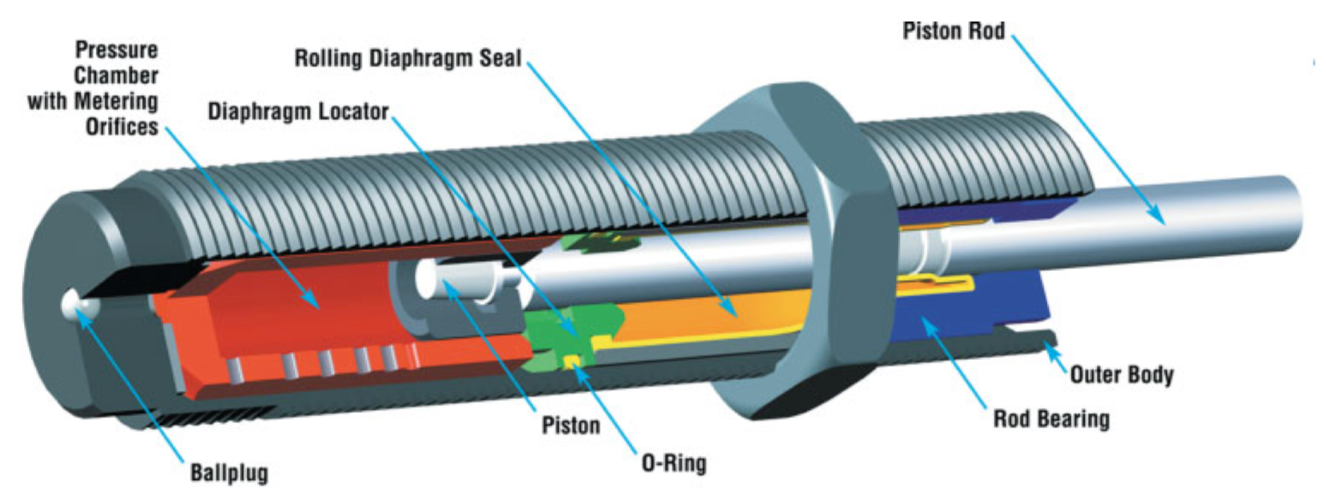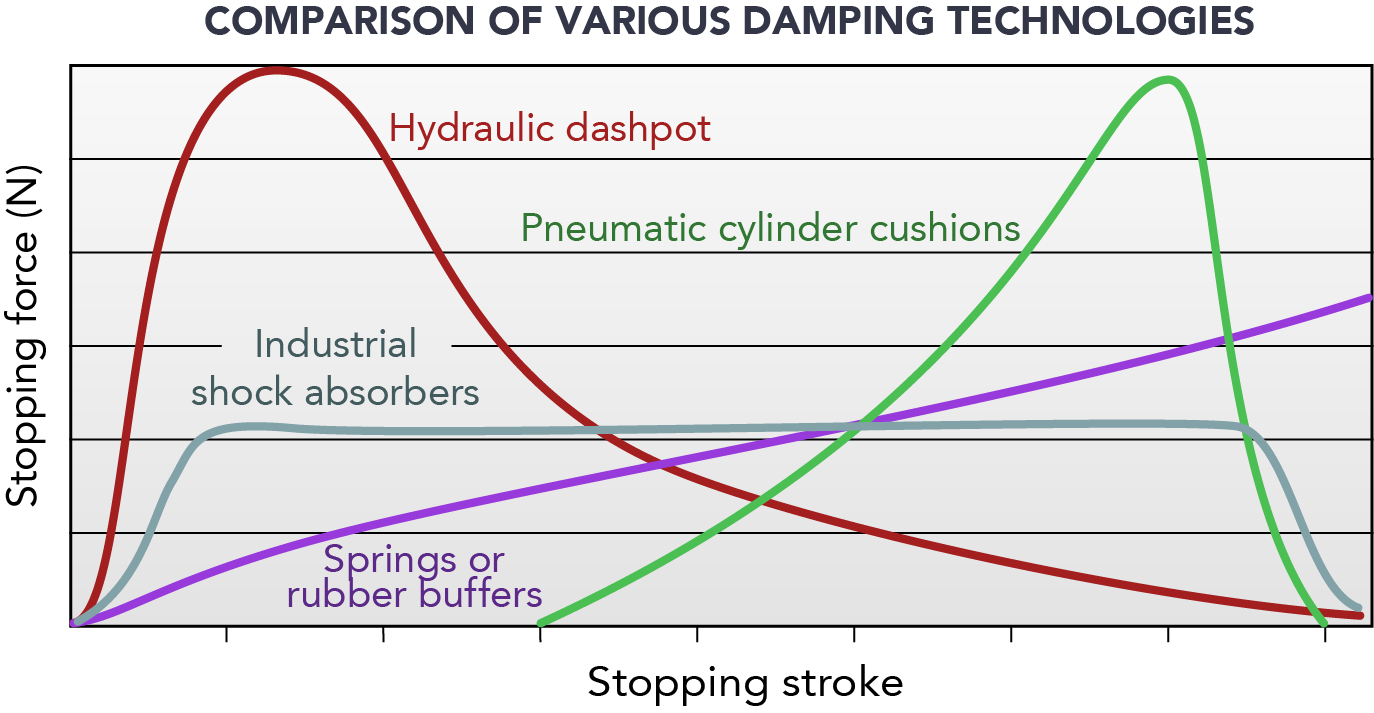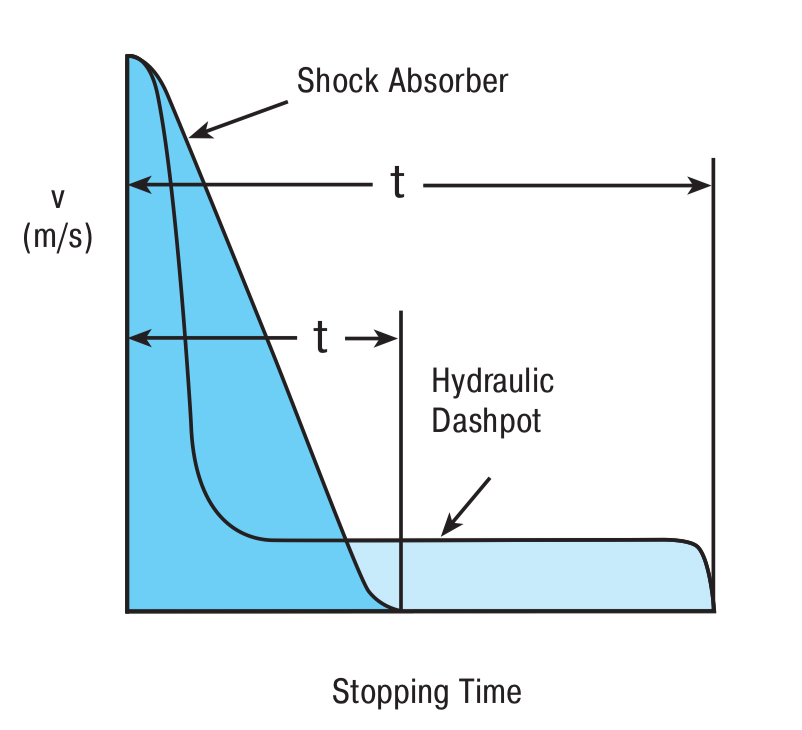Shock loads are common in industrial equipment — both as a normal result of the application and as unforeseen loads that occur when there’s a variance in the operation or process. Whether incorporated into the initial design or added after implementation, industrial shock absorbers are often the best choice for mitigating the forces that result from shock loads.
A moving load has kinetic energy proportional to the mass of the load and the square of its velocity: KE = ½ mv2.
The basic purpose of a shock absorber is to remove kinetic energy from the load being stopped, convert it to thermal energy, and dissipate it as heat, thereby preventing the kinetic energy from propagating through the equipment and surrounding structures as shock loads.
Shock absorbers can be used on both linear and rotary loads, whether the load is sliding, rolling, or free-falling.

Other shock and vibration mitigation devices, such as springs and rubber bumpers, are effective at slowing or stopping loads, but they mostly absorb the kinetic energy from the load and introduce it back into the system as rebounding, or “bouncing” of the load.
Pneumatic cushions are similar to shock absorbers in their ability to convert kinetic energy to thermal energy. But because air is compressible, their stopping forces are non-linear, increasing sharply at the end of the stopping stroke. Dashpots can also be used to slow and stop loads, but they also rely on air and provide non-linear resistance, with the stopping force peaking at either the beginning or the end of the stroke (depending on whether the device is used in “push” or “pull” mode).

Industrial shock absorbers, on the other hand, provide a relatively linear reaction force throughout the entire stopping stroke, without rebounding or bouncing at the end of deceleration. This lack of bouncing also allows shock absorbers to provide faster stopping times than other damping systems. The result is fast, smooth, and predictable deceleration of the load.

Image credit: ACE
The basic design of a shock absorber includes a double-walled cylinder, a piston, and a return mechanism for the piston. The inner cylinder is filled with a non-compressible fluid, such as hydraulic fluid or oil, and has orifices located at exponential intervals (to match the exponential nature of the kinetic energy equation).

When the load makes contact with the piston rod, the piston pressurizes the fluid and forces it through the orifices. As the piston moves through its stroke, the orifices are closed off one-by-one. This ensures that pressure inside the cylinder remains constant and provides a linear stopping force for the load.
As the fluid is pressurized and forced through the orifices, its temperature increases rapidly, and this heat (thermal energy) is then expended to the outer body of the shock absorber and the surrounding environment.







Leave a Reply
You must be logged in to post a comment.